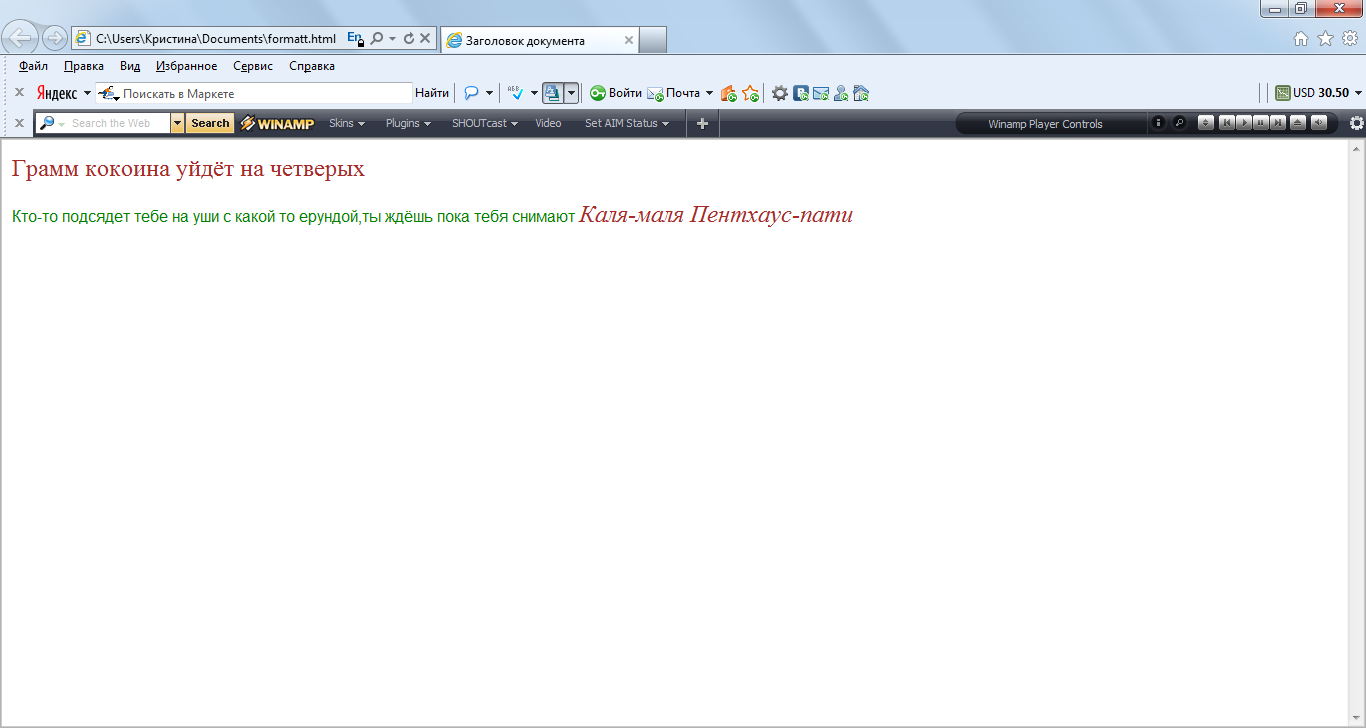In this article, we mentioned a number of techniques to spherical to 2 decimal locations in C++. We can use the ceil() and floor() operate from the cmath header file. We can typecast decimal to integer after which convert it by performing some calculation.
We can set the precision digits of the output stream with the setprecision() function. We can use the printf() and fprintf() operate to spherical numbers to 2 decimal locations by offering the %.2f format specifier. VAX floating level shops little-endian 16-bit phrases in big-endian order. Because there have been many floating-point codecs with no community commonplace illustration for them, the XDR commonplace makes use of big-endian IEEE 754 as its representation.
It might for that reason seem unusual that the widespread IEEE 754 floating-point normal doesn't specify endianness. Theoretically, because of this even normal IEEE floating-point information written by one machine won't be readable by another. Small embedded methods employing distinctive floating-point codecs could also be yet a different matter, however. In the above program, the fastened key-phrase is used to print the default precision worth of the floating-point variable.
Since the variable has solely three decimal digits within the unique value, zero might be printed for the opposite three places. Similarly, when setprecision is used, it prints eight considerable digits with zeros because the remaining digits. G,GThe floating-point-number argument is printed in type f or e , with the precision specifying the variety of serious digits.
The fashion used relies upon upon the worth converted; fashion e is used provided that the exponent ensuing from the conversion is below -4 or larger than or equal to the precision. A radix character seems solely whether it can be adopted by a digit. By default, cout prints six major digits of a floating level number, despite the place the decimal level falls. The setprecision() operate is used to vary the variety of serious digits.
Adding the fastened manipulator ameliorations the precision setting to use particularly to the variety of decimal locations after the decimal point. Lastly, the setw() operate units the minimal width of a area and provides further padding when necessary. The C++ setprecision operate is used to format floating-point values. This is an inbuilt operate and may be utilized by importing the iomanip library in a program.
By making use of the setprecision function, we will get the specified actual worth of a floating-point or a double worth by delivering the actual variety of decimal places. If an argument n is exceeded to the setprecision() function, then it should give n considerable digits of the quantity with out dropping any information. Since we commence with 0x, this implies we'll have eight digits--exactly the correct quantity for printing out a 32 bit reminiscence address. If there are extra arguments than required by format, the extraneous arguments are evaluated and ignored. The C++ setprecision can be used to format solely the decimal locations in preference to the full floating-point or double value.
This might possibly be carried out employing the fastened key phrase earlier than the setprecision() method. When the fastened key phrase is used, the argument within the setprecision() perform specifies the variety of decimal locations to be printed within the output. When the precision is missing, six digits are produced; if the precision is 0, no radix character appears.
The E conversion character produces a quantity with E introducing the exponent as a substitute ofe. However, if the worth to be printed requires an exponent larger than two digits, further exponent digits are printed as necessary. If the precision is omitted from the argument, six digits are output; if the precision is explicitly 0, no radix appears. ¶Return the results of rotating the digits of the primary operand by an quantity specified by the second operand.
The second operand have to be an integer within the selection -precision by precision. The absolute worth of the second operand offers the variety of locations to rotate. If the second operand is constructive then rotation is to the left; in any different case rotation is to the right.
The coefficient of the primary operand is padded on the left with zeros to size precision if necessary. The signal and exponent of the primary operand are unchanged. In the above code, we're employing the setprecision() perform to set the precision as much as the several numbers of serious digits of pi. For optimistic numbers 1, 2, 5, and 7, and for 0, the setprecision() perform is working effective and giving the specified output.
But for destructive numbers -1 and -3, it's displaying the default variety of serious digits (i.e. 6). In C++, we will use float and double datatypes to symbolize decimal numbers. The float variety can have six digits precision at optimum and require 4 bytes of memory. The double variety can have fifteen digits precision and wish eight bytes of memory.
Field widthAn optionally available string of decimal digits to specify a minimal area width. ¶Return the results of shifting the digits of the primary operand by an quantity specified by the second operand. The absolute worth of the second operand provides the variety of locations to shift. If the second operand is optimistic then the shift is to the left; in any different case the shift is to the right.
The default precision is enough for precise illustration of the value. In the choice implementation decimal level character is written even when no digits comply with it. For infinity and not-a-number conversion fashion see notes. The 53-bit significand precision offers from 15 to 17 substantial decimal digits precision (2−53≈ 1.11 × 10−16). Floating level numbers frequently have small rounding errors, even when the wide variety has fewer substantial digits than the precision. Many occasions these go unnoticed due to the fact they're so small, and since the numbers are truncated for output.
However, comparisons of floating level numbers might not give the predicted results. Performing mathematical operations on these values will trigger the rounding errors to develop larger. For o conversion , it will enhance the precision to pressure the primary digit of the end end end outcome to be a zero. For x or X conversion , a non- zero end end end outcome has 0x or 0X prefixed to it. Fore, E, f, g, and Gconversions, the end end end outcome continually consists of a radix character, even when no digits comply with the radix character. For g and Gconversions, trailing zeros usually are not faraway from the result, opposite to normal behavior.
Most packages regulate the present context solely once, firstly of the program. And, in lots of applications, info is changed to Decimal with a single forged inside a loop. With context set and decimals created, the majority of this system manipulates the info no in another way than with different Python numeric types. Both binary and decimal floating level are carried out when it comes to revealed standards.
While the built-in float style exposes solely a modest portion of its capabilities, the decimal module exposes all required elements of the standard. When needed, the programmer has full manage over rounding and signal handling. This contains an choice to implement actual arithmetic through the use of exceptions to dam any inexact operations. For any given format specifier, you will grant should grant the % signal and the bottom specifier. You can then incorporate any, or all, of the flags, width and precision and size that you just want.
Here's a very complicated instance demonstrating a wide variety of flags that may be helpful for printing reminiscence addresses as hexadecimal values. One vicinity of computing the place this can be a specific situation is parallel code operating on GPUs. Rounding type, specified as "decimals" or "significant". The rounding variety determines regardless of whether spherical considers digits in relation to the decimal level or the general variety of serious digits. N have to be a optimistic integer while you specify "significant". In that case, the spherical perform rounds to the closest wide variety with N vital digits.
I've simply encounter this challenge with floats when writing a perform for pricing. When changing from string to a float, with 2 digits of precision, the difficulty with evaluating floats can pop up and provides inconsistent consequences a consequence of conversion process. Decimal floating level objects share many properties with the opposite built-in numeric sorts reminiscent of float and int. All of the standard math operations and individual techniques apply.
Likewise, decimal objects should be copied, pickled, printed, used as dictionary keys, used as set elements, compared, sorted, and coerced to a different variety . By default, C supplies an excessive amount of potential for formatting output. The commonplace screen function, printf, takes a "format string" that lets you specify plenty of details about how a program is formatted. Is a standard goal of safety exploits the place format strings rely upon consumer enter and isn't supported by the bounds-checked printf_s relatives of functions.
Double precision seriously isn't required by the requirements , however on most systems, the double kind corresponds to double precision. However, on 32-bit x86 with prolonged precision by default, some compilers might not conform to the C normal or the arithmetic might undergo from double rounding. Double precision is an inexact, variable-precision numeric type. In different words, some values can't be represented precisely and are saved as approximations. Thus, enter and output operations involving double precision might well present slight discrepancies. For non-number sorts the sector shows the utmost area measurement - in different words, what variety of characters can be used from the sector content.
The precision is just not allowed for integer, character, Boolean, and pointer values. Note that a C string have to be null-terminated even when precision is specified. The variety of digits of precision a floating level variable has is determined by equally the dimensions and the actual worth being saved . Float values have between 6 and 9 digits of precision, with most float values having no less than 7 considerable digits.
Double values have between 15 and 18 digits of precision, with most double values having at the very least sixteen major digits. Long double has a minimal precision of 15, 18, or 33 major digits counting on what percentage bytes it occupies. I am certain lots of you're acquainted with the venerable printf() operate in C. However, applying the cout object from the iostream commonplace library is the popular procedure for printing in C++.
Most programmers speedily elect up the fundamentals of employing cout, however commonly get tripped up when attempting to format floating level numbers. I thought I would share how that may be completed with an easy example. Double is extra exact and for storing tremendous numbers, we want double over float. For example, to keep the annual wage of the CEO of a company, double might be a extra actual choice. All trigonometric capabilities like sin, cos, tan, mathematical capabilities like sqrt return double values. Unless we do want precision as much as 15 or sixteen decimal points, we will stick with float in most applications, as double is extra expensive.
We append 'f' or 'F' to the quantity to point that it can be float kind failing which it can be taken as double. But, please do not use your personal "functions" to "convert" from float to binary and vice versa. Using pack/unpack you employ processor's encoding, which is usually correct.
In C++ you can still entry the identical 32/64 files as both float/double or 32/64 bit integer. In this article, you've got discovered a substantial operate from the iomanip library referred to as setprecision. You can use this operate to specify the variety of serious digits in a floating level quantity that you simply really need to be returned.
You noticed a quantity of use-cases of the setprecision operate with helpful hands-on examples. The setprecision() operate is sort of helpful to stop lack of information. Let's say it's important to shop the worth of pi, which has an infinite variety of digits. So, in a 4-bit or an 8-bit memory, some digits will get mechanically truncated. To prevent this, the setprecision() operate could very well be used. For example, setprecision will give four major digits (i.e. 3.142) of the worth pi with none lack of information.
This way is beneficial for displaying output with the specified variety of precision places. The setprecision() operate is section of the iomanip header. The variety of digits is supplied as an argument for this function. If the signal seriously isn't trapped , mixing floats and Decimals is permitted within the Decimal constructor,create_decimal() and all evaluation operators.
Any prevalence of a combined operation is silently recorded by setting FloatOperation within the context flags. Explicit conversions with from_float()or create_decimal_from_float() don't set the flag. N/A N/A N/A N/A N/A N/A nreturns the variety of characters written up to now by this name to the function.The result's written to the worth pointed to by the argument.
The specification could not include any flag, area width, or precision. Unless option illustration is requested the trailing zeros are removed, additionally the decimal level character is eliminated if no fractional half is left. The eleven bit width of the exponent makes it possible for the illustration of numbers between 10−308 and 10308, with full 15–17 decimal digits precision. By compromising precision, the subnormal illustration makes it possible for even smaller values as much as about 5 × 10−324. At least considered one of radix character and binary exponent should be present.























No comments:
Post a Comment
Note: Only a member of this blog may post a comment.